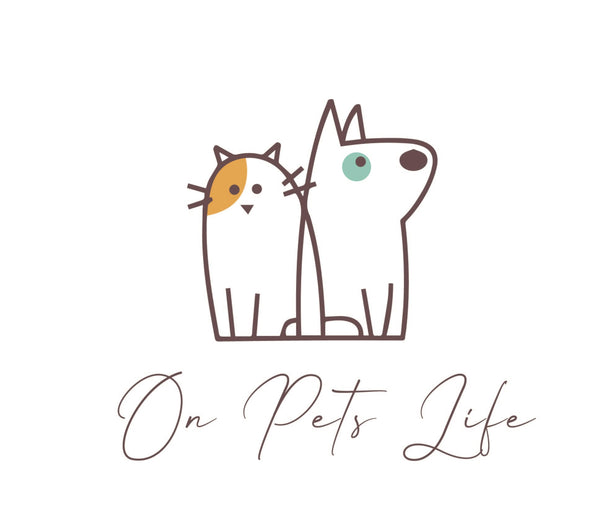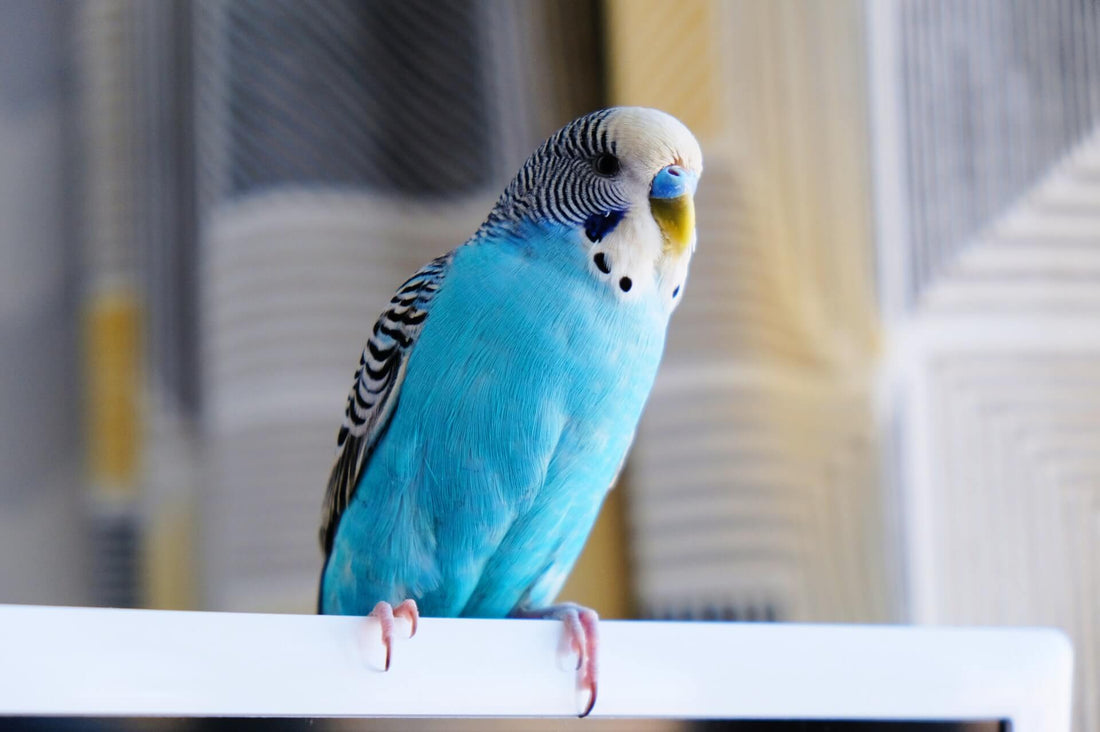Before starting this article, a point to emphasize: Neither the author nor On Pets Life store recommends any animal performance training for the purpose of entertaining oneself.
The following contents are all adaptive/habitual training for parrots to better adapt to the home environment.
1. Daily behavior coaching
First of all, it should be clear that although the artificial breeding technology of pet birds is mature, in terms of tameness, pet birds are still inferior to pet dogs that have experienced thousands of years of companionship and domestication. You and your dog and bird have not seen each other for half a year. When they see you again, your dog may jump up excitedly; but your pet bird is most likely to escape like seeing a natural enemy.
To keep your parrots in a state of closeness to humans, it is best to have more contact in daily life, and of course the contact method is hand feeding. Hand feeding is the feeding of food to parrots by hand. The food can be oily foods like melon seeds, walnuts and pine nuts, or fruits and vegetables. That is, as soon as you appear, it represents the appearance of food. Over time, parrots will naturally get close to you.
For non-hand-raised parrots that are not naturally familiar with humans, the author does not recommend raising them.

2. Learn to speak
If you keep pet parrots just to let them learn to speak, then the author recommends that it is not necessary. Although many species of parrots can learn human language, the pronunciation is mostly indistinct and small.
The fun of feeding a pet parrot is more about interacting closely with it, rather than letting it speak; or that excellent language skills and good interaction are inseparable. If a parrot is afraid of humans, it is not realistic to let it speak. And several species of parrots that are relatively good at speaking are all protected animals, and the author does not recommend raising them.
Method is important if you absolutely want your parrot to be able to talk.
2.1 Say the same word to the parrot over and over
Pronunciation should be clear, not vague, and the pronunciation should be slow, not too hasty, and only teach one word at a time. Your parrot may not know to imitate the word right away, but you need to keep repeating the word to deepen the parrot's impression of the word.
Note that parrots are very good at saying consonants such as d, t, k, p or b. As a result, statements that may seem simple to you, such as "Hey, how are you?" are actually difficult for parrots to pronounce.
If you don't know what words to teach your parrot first, consider teaching it its own name. They should have heard their name many times and were familiar with the word.
2.2 Reward it if it speaks the words you teach
This will strengthen its memory of the act and help you build intimacy. Grain, celery, and carrots provide a variety of essential nutrients, which are great bonuses.
2.3 Train for a few minutes at a time
Don't try to train for a long time at once. It is best to spend half an hour a day training your parrot to speak. Long training sessions can tire the parrots so they no longer want to learn to speak.
2.4 Don't let your parrot get distracted during training
Cover the other three sides of the cage and let the parrot focus on learning to talk to you on the remaining side. During training, you need to stand in front of the parrot and talk to it so it knows you are talking to it.
2.5 Focus on training one word
You can only continue teaching the second word after your parrot can say the first word you taught accurately at least three times. Before switching to a new word, make sure your parrot has actually learned the previous word so that it can repeat the previously learned word in the future.

2.6 Be patient
Don't force your parrot to learn to talk. Let interest become their motivation for learning, and they will be willing to learn to speak. There is a joke among parrot lovers: if you want your parrot to call you papa once, you have to call it papa 1000 times.
3. Reduce unnecessary noise
The way most birds communicate about themselves is by tweeting. And parrots are the noisy king among birds. Except for a few individuals in a few species, there are really almost no parrots that are not noisy. But as long as we can guide them correctly, we can reduce this noise to a minimum, or try not to affect our own or our neighbors' lives.
First of all, it should be clear that parrots are highly social animals and tweet is for communication. The noise of birds is definitely not just wanton noise for no reason. When they go out for food in the morning, or when they gather to rest in the evening, they will tweet together, and they will also use tweets to convey information during foraging, such as "I am here", "There is food here", "There is danger here", then we will "decipher" the various demand calls of parrots one by one.
3.1 Morning tweet or night tweet
The rest time of the parrots should be strictly regulated. If it is impossible to give the parrots a completely dark resting environment, it is recommended to use a cage cloth to keep the silence and darkness for 6 to 8 hours, so that the parrots can get enough rest.
There should not be too much difference in the daily rest time of the parrots. Although this still cannot keep them silent, it can effectively prevent the parrots from making additional tweet, so as not to disturb sleep or disturb the neighbors.
It is worth mentioning that after a long time with the owner, most of the hand-raised parrots who live with the owner in the bedroom can magically achieve "the owner doesn't get up, I don't tweet".
3.2 Presence-type tweet
Hand-raised parrots are more dependent on the owner, and if the owner cannot properly handle the parrot's dependence on himself, it is easy for the parrot to develop separation anxiety.
Separation anxiety is that as long as there is no owner in sight, the parrot will scream or destroy the cage. The most concise way to deal with it is to not respond when it tweets loudly. After the parrot has completely calmed down, release it from the cage or give it a reward.

3.3 Survival conditioned reflex tweet
Parrots make calls when the environment is too cold or too hot. However, the most common demand calls are caused by water and food. This is not the parrot's wild instinct, but the advanced conditioned reflex it learns through the feeding of the owner again and again, "As long as this big guy comes over, I will have something to eat and drink."
For small to medium parrots, it is recommended to set up a self-feeding cycle of 2-3 days. For medium to large parrots, it is recommended to feed 2 to 3 meals a day at a fixed time. This prevents the parrots from littering their food and also reduces unnecessary tweet. When feeding, using acrylic external food box can save space and food very well.

3.4 Warning tweet
Most parrots are very vulnerable vegetarians. In nature, even as large as a macaw, it may be preyed on by horned eagles, ocelots and large snakes. When they encounter danger, they will notify their companions by tweeting as soon as possible.
Birds are not very sensitive during their childhood. During this period, they can be familiarized with common animals or objects in the home, such as cats and dogs, such as rags, plastic sheets, etc. When purchasing new toys for parrots, such as brightly colored balls, you should also be familiar with them in advance. Do not throw new toys and new items directly into the bird cage. After the bird cage is moved, inappropriate arrangements around it may also cause the parrots to scream. If you can deal with the above points carefully, then you can reduce the warning noise to a minimum.
4. Eating solid foods independently
Young parrots can't eat solid food, instead they eat semi-digested chyme spit out by the parent parrot. The larger the parrot, the longer it will follow its parent as a fledgling, and the harder it will be to learn to eat solid food independently.
Fledgling of sulphur-crested Cockatoos and large macaws still demand food from their parents when they are six months to one year old, so for larger parrots, it is best to start providing solid food when they are 60 to 120 days old.
It is acceptable for medium to large parrots to learn to eat on their own before six months of age, and to be completely independent (without supplemental liquid food) before one year of age. Please note that if a parrot does not eat, it does not mean that it is not hungry. During the period of learning to eat independently, the fledglings may starve to death because they do not know how to eat.
It is relatively easy for small parrots to learn to eat solid food independently. When their wings are full, they are directly fed with soaked millet and a small amount of parrot milk powder, and then transitioned to feeding shelled seed food. After a week, the parrots can be fed solid food.
Fledglings who are just learning to eat solid food are less able to control their food intake and are less able to drink water. This requires the owner to be diligent in checking the crop status of the fledglings to prevent it from eating too much. If the parrot eats a lot of dry food but does not drink water, the owner should take the initiative to feed water.
We will continue to discuss the skills of training parrots in the next blog.

